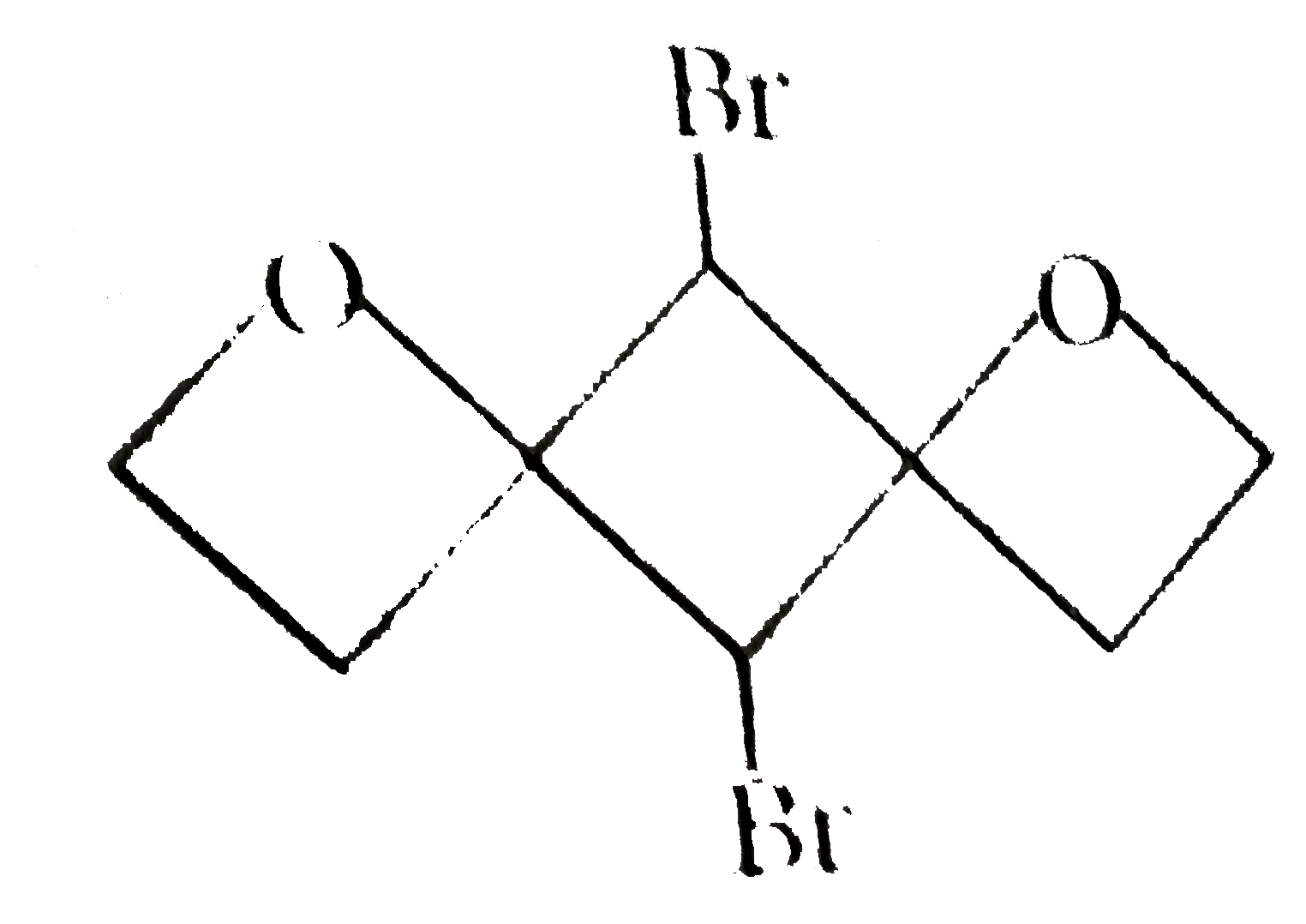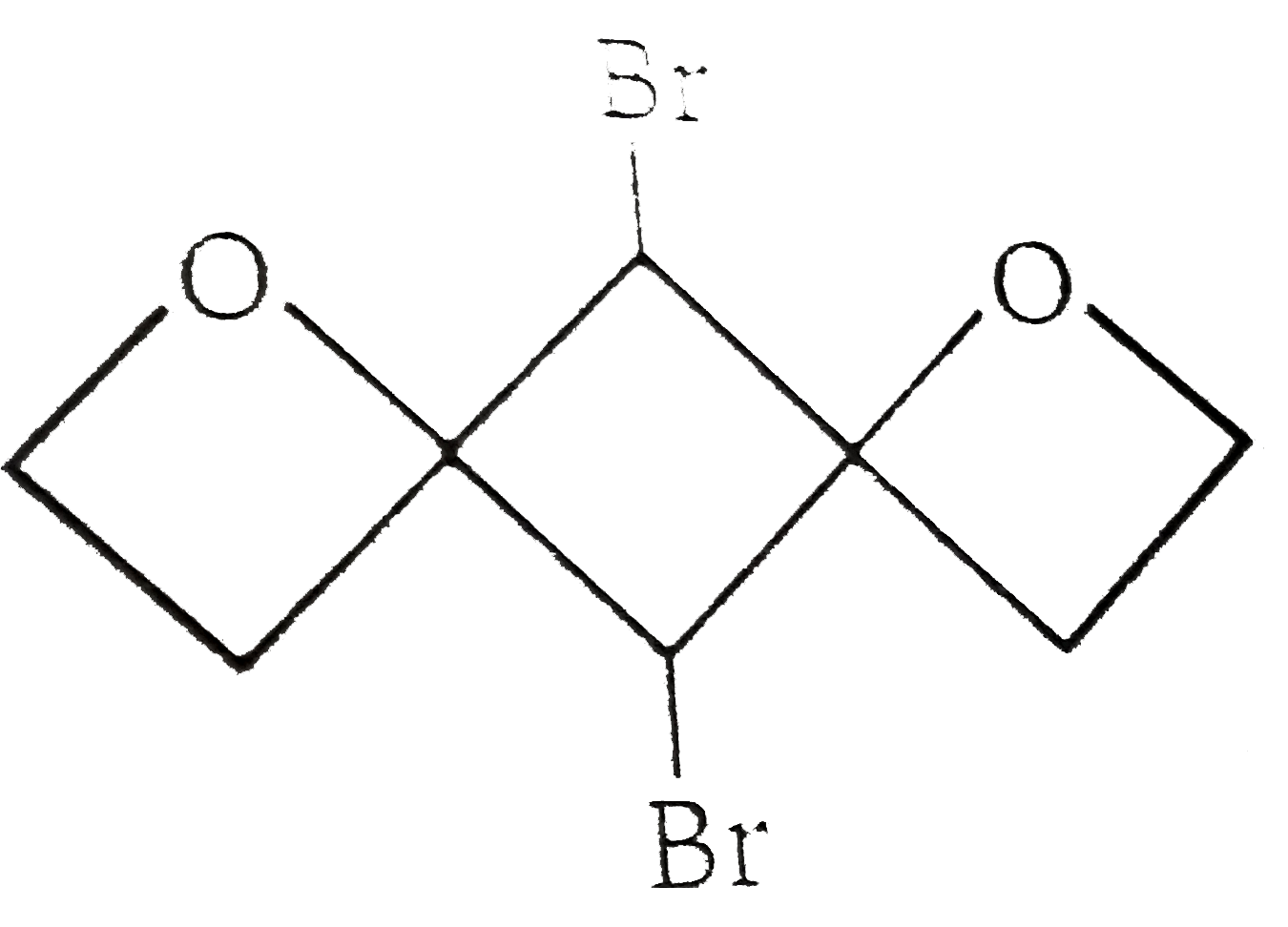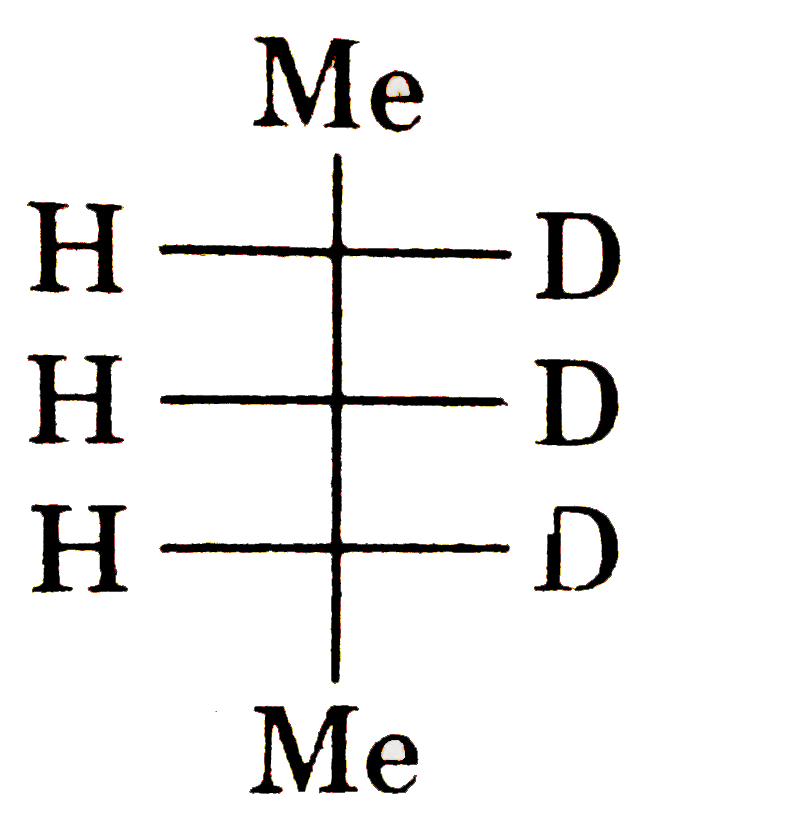The number of optically active compounds in the isomers of C4H9Br is
1
2
3
4
The correct Answer is:A
To determine the number of optically active compounds in the isomers of C4H9Br, we will follow these steps:
Step 1: Identify the possible structural isomers of C4H9Br
The molecular formula C4H9Br indicates that we have four carbon atoms, nine hydrogen atoms, and one bromine atom. We can have different structural isomers based on the arrangement of carbon atoms and the position of the bromine atom.
Step 2: Generate the structural isomers
1. 1-Bromobutane:
- Structure: CH3−CH2−CH2−CH2Br
- This compound does not have any chiral centers.
2. 2-Bromobutane:
- Structure: CH3−CH(Br)−CH2−CH3
- This compound has one chiral center at the second carbon (attached to Br, CH3, H, and CH2), making it optically active.
3. 1-Bromo-2-methylpropane:
- Structure: (CH3)2CH−CH2Br
- This compound does not have any chiral centers.
4. 2-Bromo-2-methylpropane:
- Structure: (CH3)3CBr
- This compound does not have any chiral centers.
Step 3: Identify chiral centers
A chiral center is a carbon atom that is attached to four different substituents. In our generated isomers:
- 1-Bromobutane: No chiral centers.
- 2-Bromobutane: One chiral center (optically active).
- 1-Bromo-2-methylpropane: No chiral centers.
- 2-Bromo-2-methylpropane: No chiral centers.
Step 4: Count the optically active compounds
From the analysis above, we find that only 2-Bromobutane is optically active due to its chiral center.
Conclusion
The number of optically active compounds in the isomers of C4H9Br is 1.
---
- Structure: CH3−CH2−CH2−CH2Br
- This compound does not have any chiral centers.
- Structure: CH3−CH(Br)−CH2−CH3
- This compound has one chiral center at the second carbon (attached to Br, CH3, H, and CH2), making it optically active.
- Structure: (CH3)2CH−CH2Br
- This compound does not have any chiral centers.
- Structure: (CH3)3CBr
- This compound does not have any chiral centers.
- 2-Bromobutane: One chiral center (optically active).
- 1-Bromo-2-methylpropane: No chiral centers.
- 2-Bromo-2-methylpropane: No chiral centers.
Topper's Solved these Questions
- BOOK - BANSALCHAPTER - ISOMERISMEXERCISE - Exercise -248videos
ISOMERISM
- BOOK - BANSALCHAPTER - ISOMERISMEXERCISE - Exercise -341videos
ISOMERISM
- BOOK - BANSALCHAPTER - ISOMERISMEXERCISE - Exercise -341videos
ISOMERISM
- BOOK - BANSALCHAPTER - HYDROGENEXERCISE - All Questions70videos
HYDROGEN
- BOOK - BANSALCHAPTER - PERIODIC TABLEEXERCISE - EXERCISE-333videos
PERIODIC TABLE
Similar Questions
Knowledge Check
- Question 1 - Select One
 Number of optically active isomer is/are :A0B1C2D3
Number of optically active isomer is/are :A0B1C2D3 - Question 2 - Select One
 Number of optically active isomer is/are :A0B1C2D3
Number of optically active isomer is/are :A0B1C2D3 - Question 3 - Select One
The number of optical active isomers of 2,4 dibromobutane are
A3B2C4D1
An optically inactive compound (A) having molecular formula C4H11H on treatment with HNO2 gave an alconot (B) which on heating with conc. H2SO4 at 440 k gave an alkene ( C) . ( C) on treatment with HBr gave an optically active compound (D ) having molecular formula C4H9Br Identify (A) ,(B) ,(C) and (D).
View SolutionWhat is the number of optically active isomers of compound having molecular formula C5H9Cl.
View Solution(a) Write the IUPAC names of all the possible structural isomers of C4H9Br. Point out opticaly active isomer, if any.
(b) Write the structural formulae and IUPAC names of two optically active halides containing five carbon atoms each in their molecules.View SolutionAn optically inactive amine (A) C4H11N on treatment with HNO2 gives an alcohol (B). The compound (B) on heating with conc. H2SO4 at 453 K gives an alkene ( C). The ( C) on treatment with HBr gives on optical active compound (D) having molecular formula C4H9Br. Identify (A).
View SolutionAn optical inactive amine (A) C4H11N on treatment with HNO2 give an alcohol (B ) , The Compound (B ) on heating with conc. H2SO4 at 453 K give an alkene ( C ) . The C on treatment with HBr give an optical active compound (D ) having molecular formula C4H9 Br. Identify (A )
View Solution


